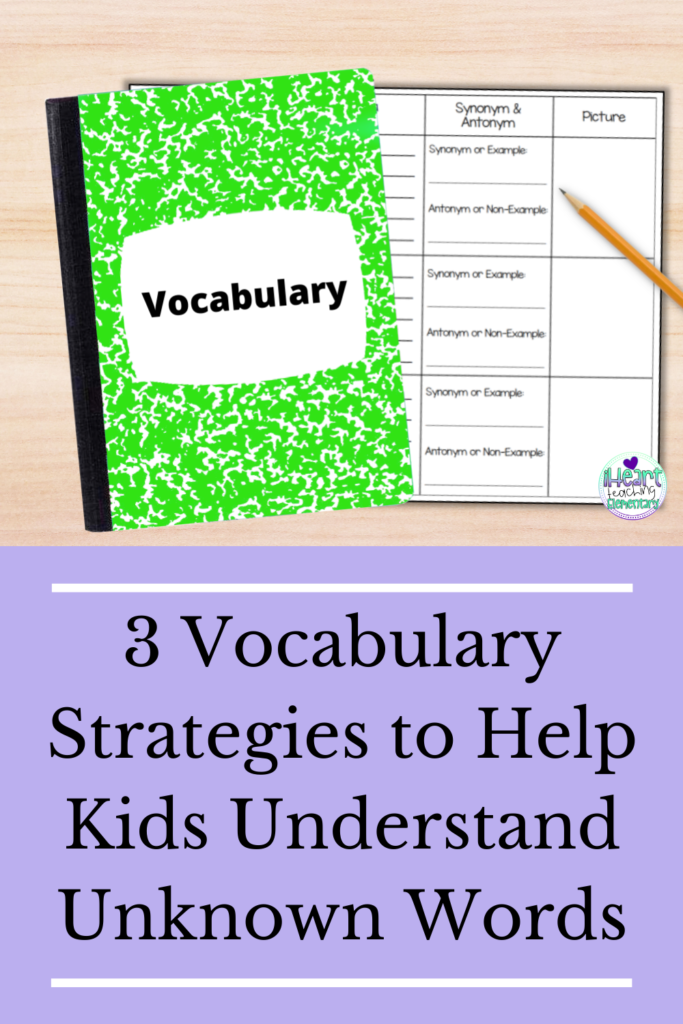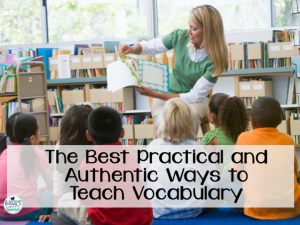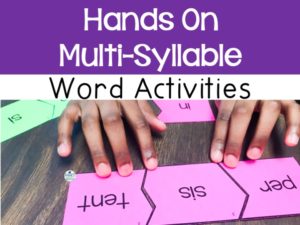You listen to a child read but they can’t tell you what an unknown word means. You’re frustrated because you’ve taught them the word before. But have you taught them these 3 vocabulary strategies?
If not, try it out! These 3 vocabulary strategies are vital in helping kids retain word meanings.
Vocabulary Strategies – Pictures
Pictures are a powerful tool for helping kids learn vocabulary words.
Why?
Because kids have to use their inference skills to determine what is happening in the pictures.
When they infer what’s happening, they can connect a vocabulary word to the picture.
Here’s a lesson idea to try out with the next set of words you teach students:
Provide a set of pictures, one for each vocabulary word. Ask students to tell you which picture goes with a certain word and why.
That’s an important part of the equation. Ask the students why the vocabulary word goes with the picture. When kids visually see what a word means, they are most likely to understand it and retain the meaning.
Another way you can do this is to have kids draw a picture of what the word means.
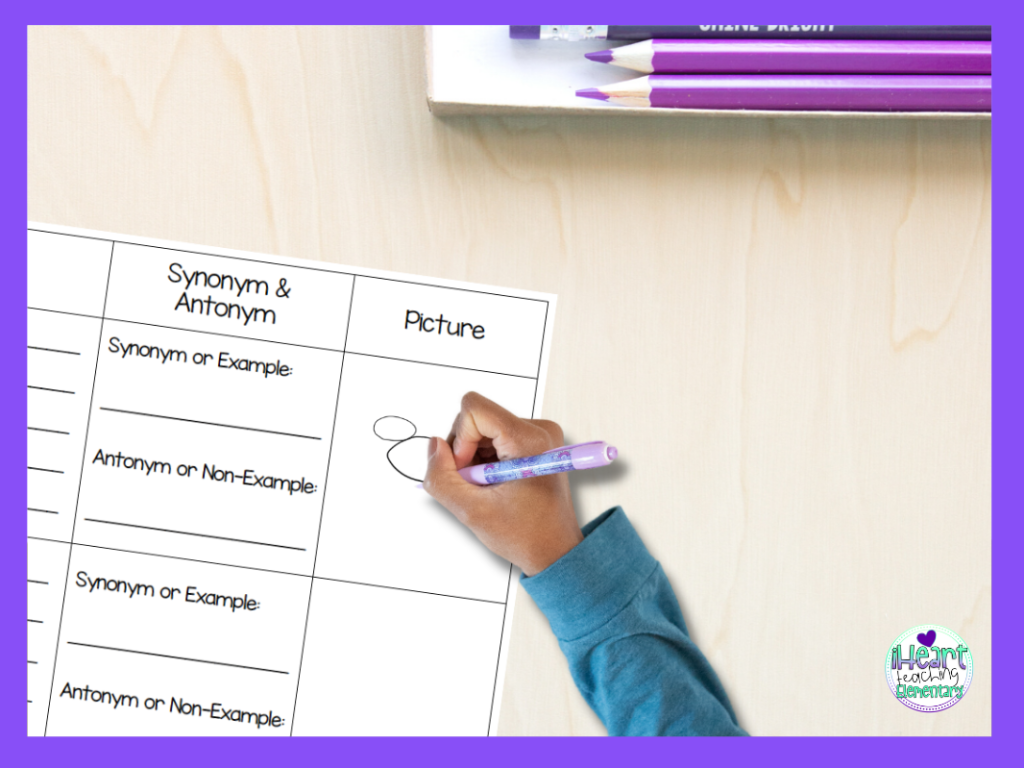
By drawing a picture they can relate to, kids have an easier time retaining what a word means.
You can include a section on their vocabulary recording sheet for just pictures that go with each word.
The next strategy I’m going to talk about “Turn and Learn” would work really well in conjunction with drawing a picture.
Vocabulary Strategies – Turn and Learn
Another powerful tool for helping kids understand vocabulary is “Turn and Learn”.
At the beginning of the year, determine reading partners so students can turn and talk about vocabulary words.
Here’s an idea for what to do when teaching vocabulary using “Turn and Learn”:
Give students a sentence that includes context clues for a vocabulary word. Tell students to think about what they think the word means using the text clues.
Giving students time to think before talking to their partner, helps them be more prepared during “Turn and Learn”.
After about 30 seconds, tell students they are going to teach their partner what they think the word means. But they also have to hear what their partner says and learn from them.
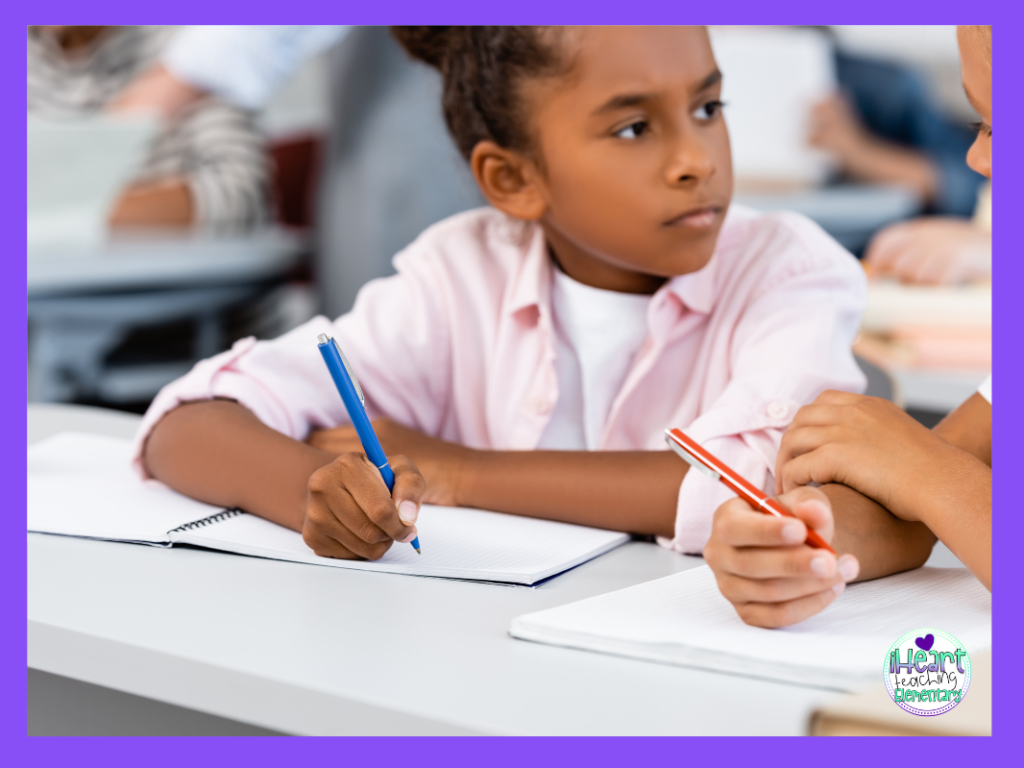
When students turn and talk to their partners, they need to pay attention to what their partner is saying. After a few minutes of partner discussions, ask a few students to share the meaning their partner taught them.
If you have students who don’t agree with their partner’s answer, it’s ok for them to still tell you what they learned. They can say that they disagree with their partner and share what they think the correct meaning is.
When students “Turn and Learn”, they aren’t talking at each other but instead listening to their partners. Focusing on listening to their partner helps students learn from their peers and clear up misconceptions.
When a few students share out with the class, you can help explain meanings or clear up misconceptions.
The discussion about each vocabulary word, helps students further understand word meanings.
Writing Sentences
When students do independent work with vocabulary words, it’s also helpful for them to write sentences using the words.
At the beginning of the year, you’ll do more modeling and guided practice when writing sentences with good context clues.
After a few weeks of guided practice, students should write sentences on their own. Writing sentences using vocabulary words, helps students understand word meanings in the context they have chosen.
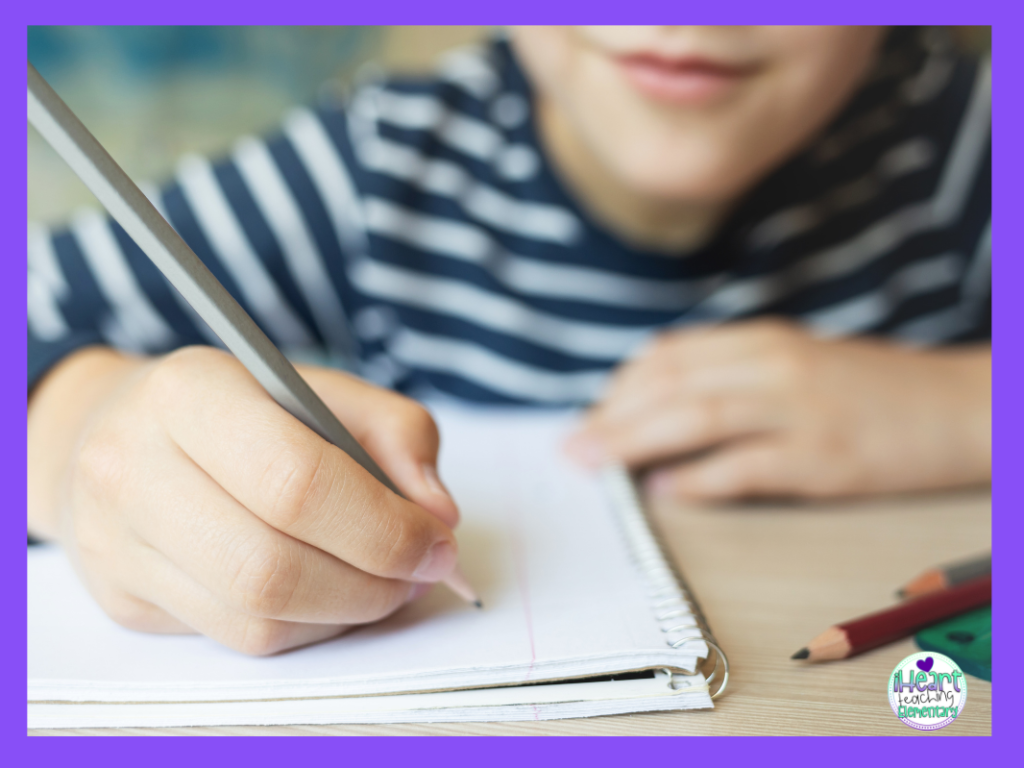
You could even use the “Turn and Learn” method when having students create sentences. This will give them a bit more of a scaffold which is needed at the beginning of the year.
To make sure kids are using context clues within their sentences correctly, I like to help students elaborate.
For example, just say a student writes “The pizza was scrumptious.” I tell them, “Oh the pizza was big?” This shows them that we need more clues about what scrumptious means.
Together, the students and I can add to the sentence- “The pizza was so scrumptious that I decided it was my favorite food ever.”
That second sentence gives more context clues about what scrumptious means.
Kids will have a difficult time at the beginning of the year writing good context clues. But eventually, they get better at it because they’re understanding word meaning.
If you’d like some vocabulary resources that you could use these strategies with, I’ve got you covered!
Sign up below for my free vocabulary resource that goes along with the book Each Kindness by Jacqueline Woodson.
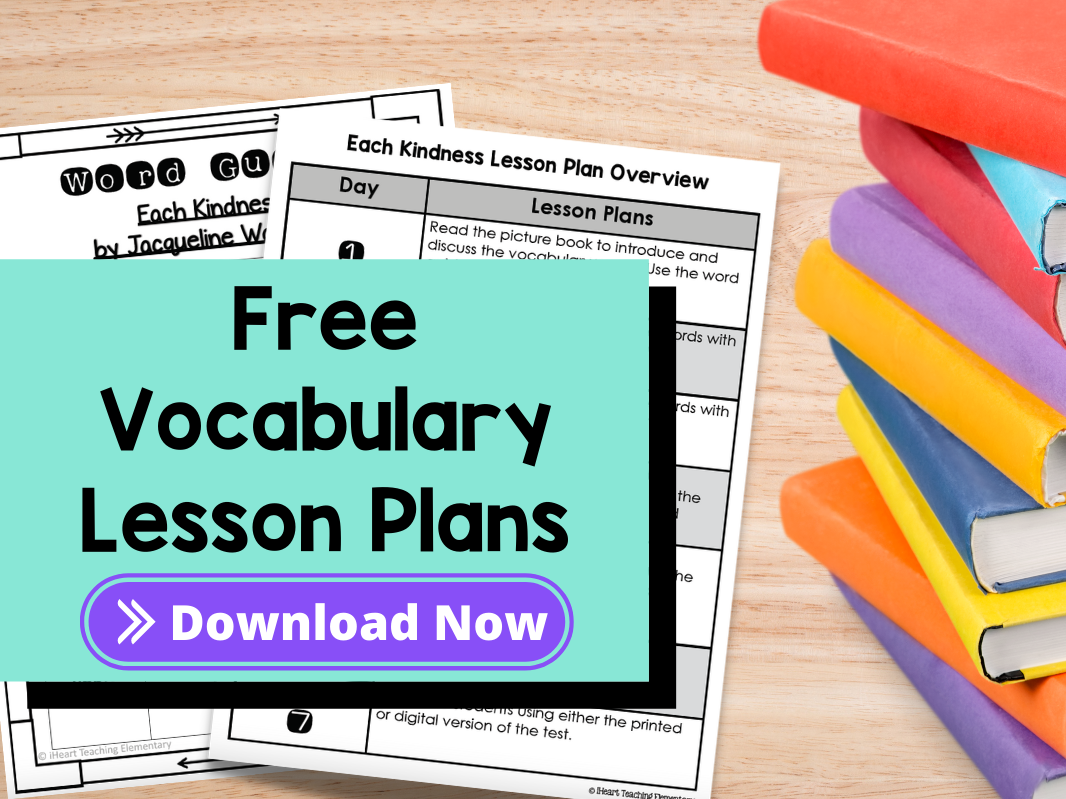
Save This Post for Later
